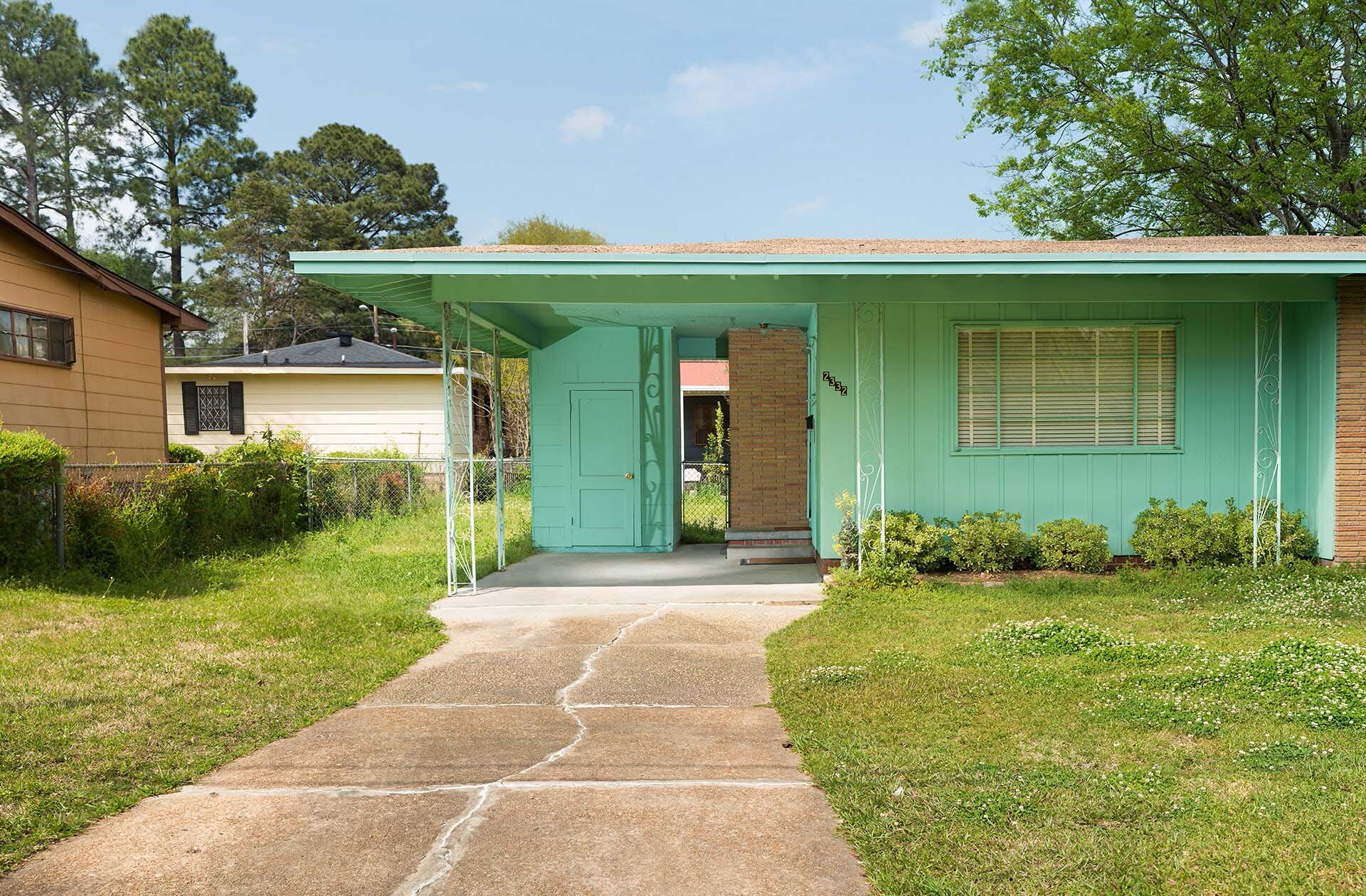
Ghosts of Segregation
Photographs by Rich Frishman
“Our built environment, in other words, is a kind of societal autobiography, writ large.”
– Rich Frishman
In Ghosts of Segregation, photographer Richard Frishman explores the lingering presence of segregation, slavery and institutional racism hidden in everyday American architecture. From the New Orleans Slave Exchange and “colored entrances” at movie theatres to the abandoned Negro Nursing School in Houston, Frishman's photographs show how our surroundings bear witness to history, reminding us where we have been, where we are now, and crucially asking, “where do we go from here?”
The built environment is society's autobiography writ large. Seeking to spark an honest conversation about the legacy of racial injustice in America, Ghosts of Segregation explores vestiges of racism in places that have been repurposed or partially covered up: the curious side window at Pascagoula's Edd's Drive-In, the enigmatic barred door at Seattle's Moore Theatre, or the quaint cabins dotting Idlewild, Michigan. The shock of Frishman’s pictures is how insidious evidence of segregation and historic racism can be. Jim Crow not only extended across America, it became part of everyday life in communities across the country.
Implicit in this uniquely powerful project is the belief that together we have the capacity to rise above the deep-rooted ramifications of slavery, “America's original sin.” Frishman’s photographs speak to the complex and difficult road towards social justice and equality in America, and cast light on generations of painful inequality and social turmoil. The project arrives at a moment when our culture struggles to re-evaluate the dynamics of race, and re-calibrate the prospects for improved race relations in America.
Ghosts of Segregation is rich in educational content. Extended labels are provided for each work, explaining the significance of the places depicted. The project engages themes of American and African American history, racism, segregation and slavery, as well as land and architecture use. It provides a touchstone for conversations about contemporary racial and ethnic diversity, migration and identity, and the African diaspora. The artist is available for talks and public programs by separate arrangement.
WORKS
35 framed photographs
DIMENSIONS
24 x 24 inches (61 x 61 cm) to 40 x 50 inches (102 x 127 cm)
SPACE REQUIREMENTS
220 linear ft (68 linear m)
EXHIBITOR RESOURCES
Prospectus (See Below)
EDUCATIONAL PROGRAMMING
Artist available for lectures and panel discussions
INQUIRIES
exhibitions@curatorial.org | 626.577.0044
FEE
Please Inquire
EXHIBITION SCHEDULE
David J Sencer CDC Museum | Atlanta, Georgia
(October 16, 2023 – May 24, 2024)
Charles Allis and Villa Terrace Museums | Milwaukee, Wisconsin
(July 11, 2022 – December 8, 2022)
Lawrence Arts Center | Lawrence, Kansas
(September 10, 2021 – December 12, 2021)
ARTIST BIOGRAPHY
Born and raised in Chicago, Frishman studied with photographic artists Reed Estabrook, Robbert Flick, and Art Sinsabaugh at the University of Illinois. As a photojournalist he has contributed to numerous publications including LIFE, National Geographic, Sports Illustrated, Microsoft, and Time. In 1983 he was nominated for a Pulitzer Prize for feature photography. His work is included in prominent institutional collections, including the Museum of Fine Arts Houston, the New Orleans Museum of Art, and the Amon Carter Museum. Frishman has garnered dozens of prestigious awards, including the 2019 Curator's Choice Award from Review Santa Fe, the 2019 PhotoNOLA Portfolio Review Award, two Sony World Photography Awards (2018) Communication Arts Photography Award (2018), Photo District News Photo Annual (2018), and is a three-time finalist in Photolucida’s Critical Mass competition. Frishman lectures around the US about the intersection of the designed environment, history, and social issues.
EXHIBITION CATALOG
Learn More
REVIEWS
NPR, WUWM | August 17, 2022
Milwaukee Independent | July 28, 2022
Lawrence Journal-World | September 6, 2021
Kansas Reflector | September 2, 2021
BBC News Interview | February 2, 2021
New York Times | November 30, 2020















